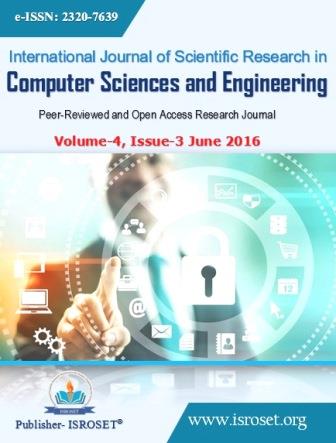An Optimal Route Search Using Spatial Keyword Query using Keyword Nearest Neighbor Expansion
Keywords:
Spatial keyword query, spatial objects, spatial database, best keyword cover queryAbstract
In our daily life the need to find optimal routes between the two points is critical, for instance finding the shortest distance to the nearest hospital. The internet based maps are now generally used for this purpose. Route search and optimal route queries are two significant classes of queries based on the road network concept. Route search queries find the route based on the given constraints. The optimal route queries find the optimum route from a set of specifications by a user. In the road map queries, users would have to give the specification of the starting point and the ending point of their travelling with or without the constraints. A few spatial features about the categories and the different locations should be specified along with this. If the travelling constraints are given then it should be unique. These constraints may be either a total order or a partial order. In this specification order there should be information about both the starting point and the destination point of the travelling. The optimal route queries optimize the possible routes and give the optimal route that meets all the constraints. This paper describes the survey on optimal route query processing, two categories namely optimal route query processing and spatial search with categorical information have been considered, an analysis on technique for optimal route query with constraints and without constraint is also included. The total order needs a specification of list of points and in the same order that they should be visited but that is not required for partial order constraints. Lastly this paper concludes with pros and cons of different techniques under optimal route queries.
References
C. Zeng, JF. Naughton, JY. Cai, “On differentially private frequent itemset mining”, VLDB Endowment, Vol.6, Issue.1, pp.25-36, 2012.
H. Chen, WS. Ku, MT. Sun, R. Zimmermann, “The partial sequenced route query with traveling rules in road networks”, GeoInformatica, Vol.15, Issue.3, pp.541-69, 2011.
J. Sander, M. Ester, HP. Kriegel, X. Xu, “Density-based clustering in spatial databases: The algorithm gdbscan and its applications”, Data mining and knowledge discovery, Vol.2, Issue.2, pp.169-94, 1998.
J. Li, YD. Yang, N. Mamoulis, “Optimal Route Queries with Arbitrary Order Constraints”, IEEE Trans. Computers, vol. 25, no. 5, pp. 1097- 1110, 2013.
A. Nanopoulos A, P. Bozanis, “Categorical Range Queries in Large Databases”, Springer-Verlag, Berlin-Heidelberg, pp. 122-139, 2003.
M. Kolahdouzan, C. Shahabi, “Voronoi-based k nearest neighbor search for spatial network databases”, International conference on Very large data bases, Vol.30, pp.840-851, 2004.
M. Sharifzadeh, MR. Kolahdouzan, C. Shahabi, “The Optimal Sequenced Route Query”, International Journal of Very Large Data Bases, Vol.17, No.4, pp.765-787, 2008.
JB. Rocha-Junior, A. Vlachou, C. Doulkeridis, K. Nørvåg, “Efficient processing of top-k spatial preference queries”, VLDB Endowment, Vol.4, Issue.2, pp.93-104, 2010.
Downloads
Published
How to Cite
Issue
Section
License

This work is licensed under a Creative Commons Attribution 4.0 International License.
Authors contributing to this journal agree to publish their articles under the Creative Commons Attribution 4.0 International License, allowing third parties to share their work (copy, distribute, transmit) and to adapt it, under the condition that the authors are given credit and that in the event of reuse or distribution, the terms of this license are made clear.







